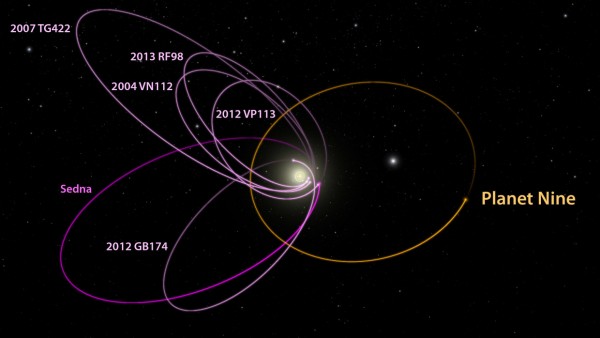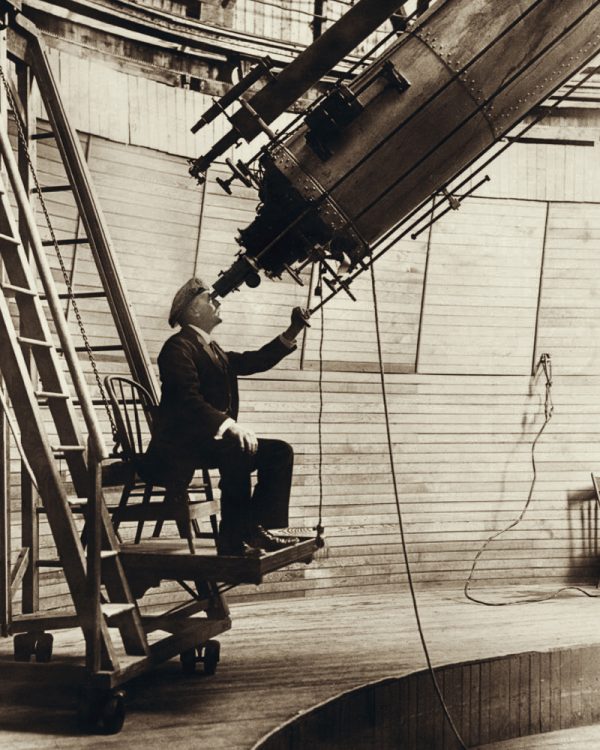A joint 48th meeting of the Division for Planetary Sciences and 11th European Planetary Science Congress is going on this week – October 16-21, 2016 – in Pasadena, California. At it, at least two groups of astronomers are presenting their ideas and research on the possibility of a very distant, very large, undiscovered 9th planet in our solar system.
Caltech astronomers announced at the meeting that an undiscovered large planet on the fringes of our solar system appears to be responsible for tilting the sun.
This unusual tilt of the sun has been known since the mid-1800s, these astronomers said, but it’s not often discussed because no one has a clue what causes it. Could a 9th planet be the cause? Elizabeth Bailey, who is a graduate student at Caltech, led a study suggesting that a large and distant planet may be adding a wobble to the solar system, giving the appearance that the sun is tilted slightly. Bailey said:
Because Planet 9 is so massive and has an orbit tilted compared to the other planets, the solar system has no choice but to slowly twist out of alignment.
If you’ve ever observed planets, you might have noticed they follow the same path across our sky as the sun. That’s because the major planets in our solar system orbit the sun in a nearly flat plane, roughly within a couple degrees of each other. The Caltech statement said:
That plane, however, rotates at a six-degree tilt with respect to the sun — giving the appearance that the sun itself is cocked off at an angle. Until now, no one had found a compelling explanation to produce such an effect.
Bailey works with Caltech’s Konstantin Batygin and Mike Brown, whose work released early in 2016 predicts a large, undiscovered 9th planet beyond Neptune. Brown spoke of our sun’s little-known tilt, which, he said is:
… such a deep-rooted mystery and so difficult to explain that people just don’t talk about it.
According to the work of Brown and Batygin, the as-yet-unseen planet is about 10 times the size of Earth with an orbit that is about 20 times farther from the sun on average than Neptune’s. According to their calculations, Planet 9 appears to orbit at about 30 degrees off from the other planets’ orbital plane and thus, if it exists, it “changes the physics” of how the rest of the solar system behaves. Batygin commented:
It continues to amaze us; every time we look carefully we continue to find that Planet 9 explains something about the solar system that had long been a mystery.
Read more about Elizabeth’s Bailey’s study here.
Enjoying EarthSky so far? Sign up for our free daily newsletter today!

Meanwhile, astronomers from the University of Arizona – led by Renu Malhotra – explained their analysis of data from what they called “extreme Kuiper Belt objects.” These are known bodies far beyond Neptune, all of which get very close to the sun at one point in their orbits, then swing out to hundreds of astronomical units (Earth-sun units) away from the sun. Malhotra said:
We analyzed the data of these most distant Kuiper Belt objects and noticed something peculiar, suggesting they were in some kind of resonances with an unseen planet.
Our paper provides more specific estimates for the mass and orbit that this planet would have, and, more importantly, constraints on its current position within its orbit.
The astronomers said that the four Kuiper Belt Objects with the longest known orbital periods revolve around the sun in patterns most readily explained by the presence of a hypothetical Planet 9 approximately 10 times the mass of Earth.
According to the Arizona astronomers’ calculations, the hypothetical planet would complete one orbit around the sun roughly every 17,000 years. At its farthest from our sun, it would swing out more than 660 astronomical units, that is, 660 times the distance between our Earth and sun.
This work is published in The Astrophysical Journal.

Bottom line: At this week’s joint meeting of the Division for Planetary Sciences and 11th European Planetary Science Congress, at least two groups of astronomers are presenting recent ideas and research on the possibility of a large 9th planet in our solar system.











